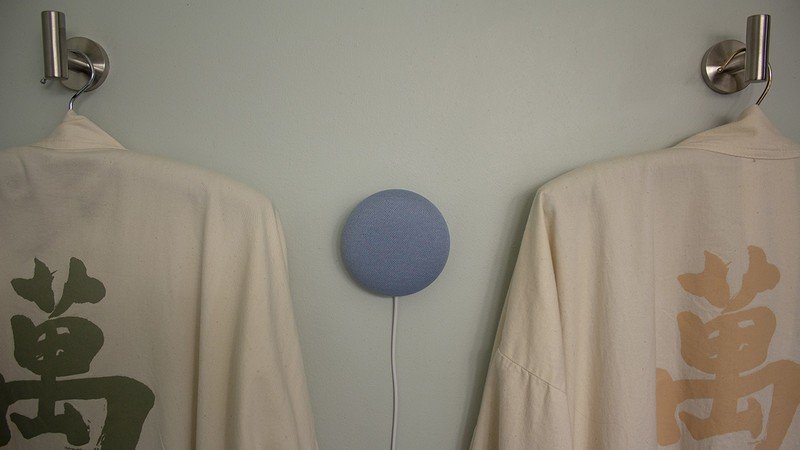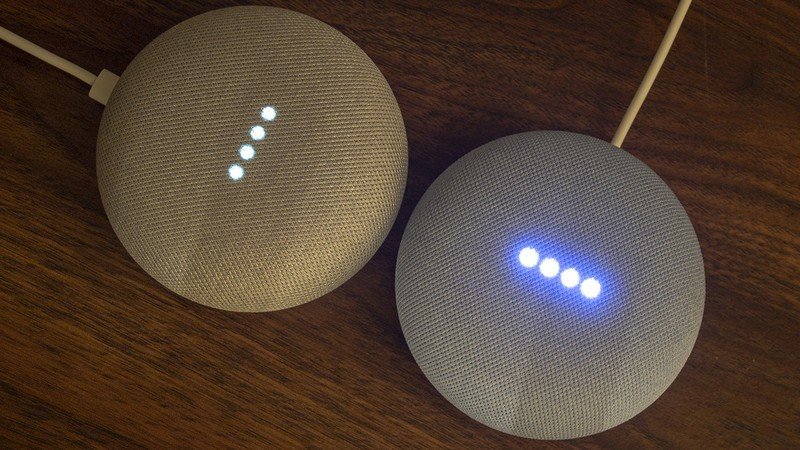Nest Mini vs. Google Home Mini: Should you upgrade?

Nest Mini (Second Gen)

Google has fixed almost everything that was wrong with the original Google Home Mini and created a significantly better product without raising the price at all. It's the best way to get Google Assistant in your home for less money than man other smart speakers, and it provides an incredible way to get whole-home audio without all the complicated configuration.
Nest Mini (Second Gen)
Reasons to buy
Reasons to avoid
Google Home Mini (First Gen)

The original tiny Google Assistant-enabled speaker was a great way to get Google Assistant into your home for less money, but the audio quality was a real letdown. There's no reason to choose this speaker over the Nest Mini if you're buying a brand new one, but it can be found for significantly less money than the Nest Mini through many retailers or second-hand.
Google Home Mini (First Gen)
Reasons to buy
Reasons to avoid
The Nest Mini is Google's replacement for the original Google Home Mini. While it brings about improvements in every single area you could hope for, both speakers have several similarities. Both speakers offer the ability to call on Google Assistant whenever you need it, both offer easy whole-home audio for jamming to your favorite tunes in every room, and both provide deep tie-ins and simple voice control for tens of thousands of smart home devices — over 50,000 as of September 2020.
How much better is it, really?

If you're in the market for a Google Assistant-enabled smart speaker and need something small, the Nest Mini is a no-brainer. It's better than the original in just about every way. If you're looking to upgrade from the original Google Home Mini, instead, the answer is likely a yes. The Nest Mini (Second Gen) shows clear signs of Google listening to what reviewers and customers had to say about the Google Home Mini (First Gen).
But for all its improvements, this speaker is nearly identical looking to the first gen product and even matches most specs down to the size and looks of the device.
| Header Cell - Column 0 | Nest Mini | Google Home Mini |
|---|---|---|
| Dimensions | 3.9" x 3.9" x 1.6" | 3.9" x 3.9" x 1.6" |
| Weight | 181g | 173g |
| Microphones | 3 | 2 |
| Mute Button | Yes (Switch) | Yes (Switch) |
| Speakers | 40 mm driver, 360-degree sound | 40 mm driver, 360-degree sound |
| Streaming | Google Cast, Bluetooth | Google Cast, Bluetooth |
| Pair multiple for stereo sound | Yes | Yes |
| Wall mountable | Yes | No |
| Finishes | Chalk, Charcoal, Coral, Sky | Chalk, Charcoal, Coral, Aqua |
| Universal cable? | No | Yes (micro-USB) |
So what exactly is so good about the Nest Mini? Here are a couple of reasons you might be willing to shell out $50 to replace those existing Google Home Mini speakers.
Thumping good sound
Be an expert in 5 minutes
Get the latest news from Android Central, your trusted companion in the world of Android

Unlike the Google Home Mini (First Gen), the Nest Mini (Second Gen) can be used to actually enjoy music in every room of the house. While the Google Home Mini (First Gen) is a decent way to get music in every room of your home for cheap, the sound quality that comes from the speaker reflects the price of the product. Google figured out how to significantly improve this aspect of the speaker without modifying its tiny dimensions at all, something for which they certainly need to be applauded.
Sound on this speaker is full, vibrant, and sounds very good. Bass still isn't quite up to the level of Nest Audio, but that product is double the price so it should have better audio quality! Still, it's a considerable improvement over the first that's immediately obvious if you own a Google Home Mini (First Gen). It's not just bass that's better, either. It's the entire audio mix. Everything is better balanced, and the range of audio produced on the Nest Mini (Second Gen) means you'll hear nuances of songs that simply aren't present on the Google Home Mini (First Gen)'s anemic speaker.
The unit sounds better, in part, because it requires more energy to power its sound drivers. 15W is still a relatively low amount of power for an electronic device like this, but it is an increase over the 3-4W of the orignal's. Unfortunately, Google gave up a fantastic opportunity to further unify its hardware offerings with a USB Type-C cable, instead opting for a proprietary power cable. The Google Home Mini shipped with a micro-USB cable, which, even at the original time of release was a bizarre choice since USB Type-C had already established itself as the next big universal cable.
This is easily the worst part of the Nest Mini's design because it means that, unlike the Google Home Mini, you can't simply swap out any one of the micro-USB cables you've got lying around the house from phone purchases over the years. While the unit obviously ships with the proper cable to power it, you won't have the same luxury of having a universal cable as the Google Home Mini (First Gen) had.
Tack it up

If you're like me, you've always wanted to mount your Google Home Minis somewhere on a wall but never wanted to spend the dough to buy some of the third-party mounts on the market. Google noticed that more than a few people wanted this functionality and added a mounting hole on the bottom of the Nest Mini so you can easily hang it on any wall in your home with a simple nail or screw.
What's also nice is that, if you already splurged and purchased some brackets to mount the Google Home Mini (First Gen) on the wall, the Nest Mini (Second Gen) is the exact same size and will work perfectly with your existing brackets.
One additional far-field microphone on the Nest Mini means that the unit can hear your commands better in any room, especially when there's other noise happening. The Google Home Mini only features two mics and sometimes has a hard time hearing commands if you've got kids playing loudly or are making a racket while cooking, for example.

If you're already a Google Home Mini owner, you might recall the drama that surrounded the buttons on the top of the unit when the first-gen Mini initially went up for sale. While Google's ultimate decision was to disable this top button permanently for the Google Home Mini (First Gen), they've completely fixed the issues that (literally) surrounded the button, and it now operates as originally intended on the Nest Mini (Second Gen).
The last part that will undoubtedly make a few folks happy, especially with the new ultrasonic sensor on the Nest Mini. This new sensor can detect when someone is close and reaches toward the Nest Mini to adjust the volume or press the top button, and will illuminate the buttons to better facilitate usage. It's a charming addition that makes the unit just feel a bit more user-friendly.

Hang it up, turn it up
While you may already have several Google Home Minis in your home, upgrading to the Nest Mini is an excellent idea if you're looking for better audio quality, ease of mounting on a wall without extra accessories, or if you really just want working buttons on top of the unit. It's a significant improvement to an already excellent product, and it makes this the easiest small speaker to recommend if you want Google Assistant everywhere in your home.

Best on a budget
The Google Home Mini is still a great way to get into the world of Google Assistant, but it's best for enhancing your smart home or for listening to podcasts while you're lying in bed. It's regularly found well under the MSRP and is an incredible overall value, primarily when found for a low price.

